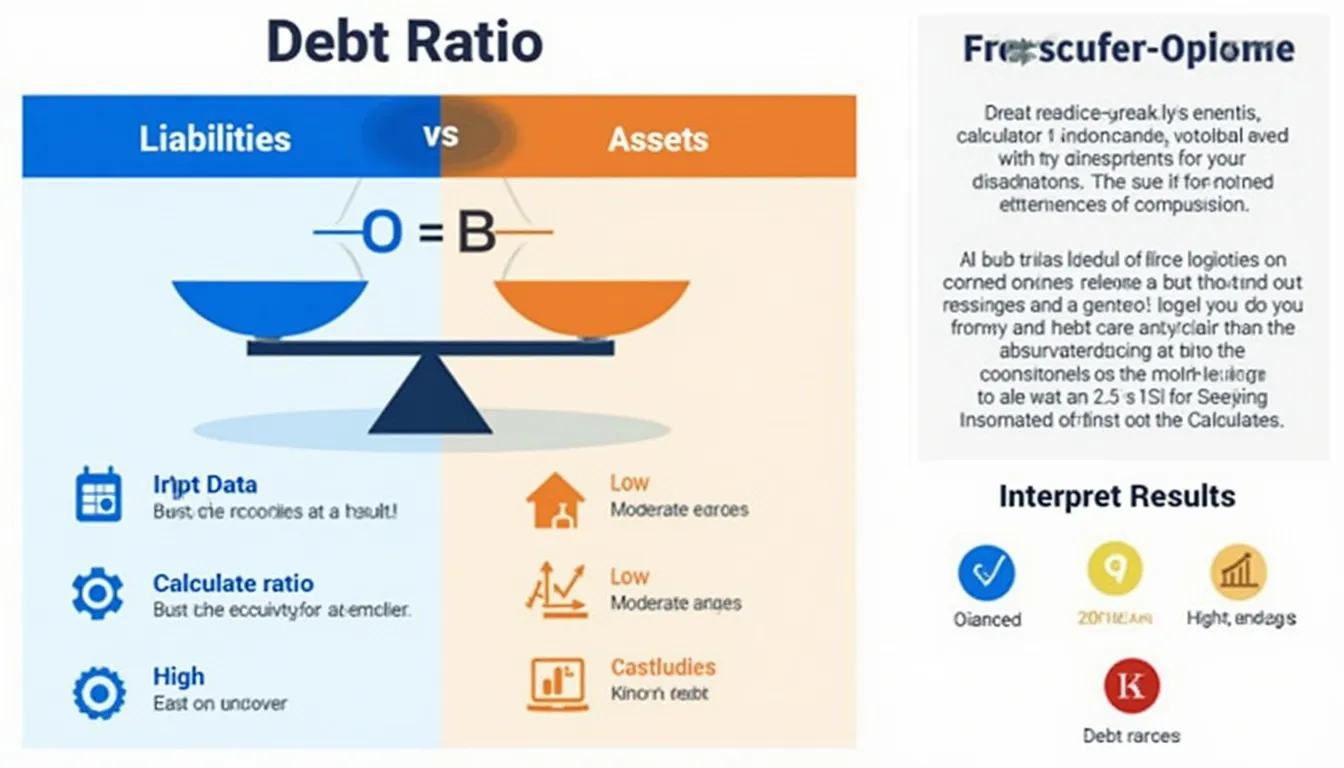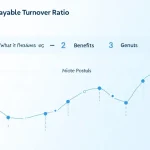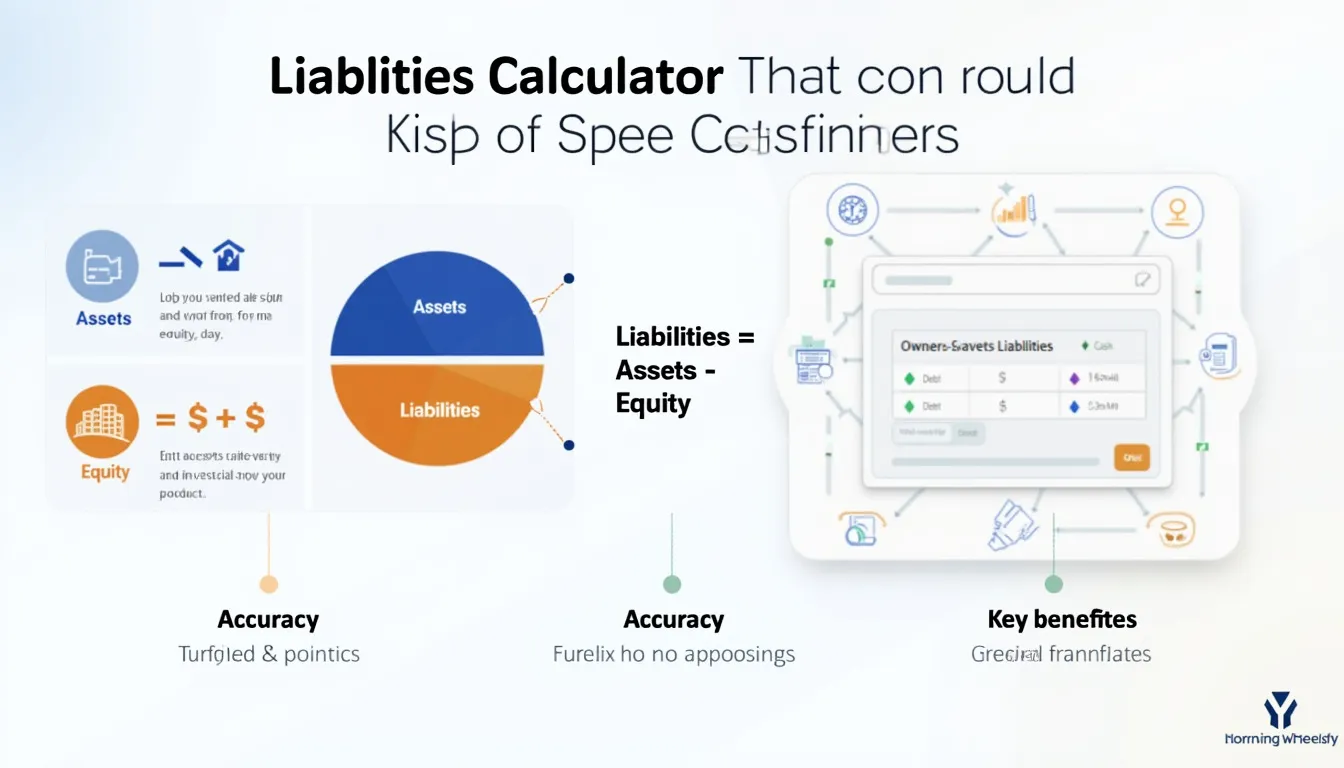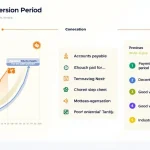Debt Ratio Calculator
Is this tool helpful?
How to Use the Debt Ratio Calculator Effectively
The Debt Ratio Calculator is a powerful tool designed to help you assess your company’s financial health quickly and accurately. Here’s a step-by-step guide on how to use this calculator effectively:
- Enter Total Liabilities: In the first input field, enter your company’s total liabilities. This includes all short-term and long-term debts, accounts payable, and other financial obligations.
- Input Total Assets: In the second field, enter the total value of your company’s assets. This encompasses all tangible and intangible assets owned by the company.
- Click “Calculate Debt Ratio”: Once you’ve entered both values, simply click the “Calculate Debt Ratio” button.
- Review the Result: The calculator will instantly display your company’s debt ratio, presented as a decimal number.
It’s important to note that the debt ratio is typically expressed as a decimal. For example, a debt ratio of 0.5 means that 50% of your company’s assets are financed by debt.
Understanding the Debt Ratio: Definition, Purpose, and Benefits
The debt ratio is a crucial financial metric that provides insight into a company’s leverage and financial risk. It’s calculated by dividing total liabilities by total assets, resulting in a figure that represents the proportion of a company’s assets that are financed by debt.
Mathematically, the debt ratio is expressed as:
$$\text{Debt Ratio} = \frac{\text{Total Liabilities}}{\text{Total Assets}}$$The purpose of the debt ratio is to assess a company’s financial leverage and its ability to meet its financial obligations. It’s a key indicator used by investors, creditors, and financial analysts to evaluate a company’s financial health and risk profile.
Key Benefits of Understanding Your Debt Ratio
- Financial Health Assessment: The debt ratio provides a quick snapshot of your company’s overall financial health.
- Risk Evaluation: It helps in assessing the level of financial risk your company is exposed to.
- Comparative Analysis: The debt ratio allows for easy comparison with industry standards and competitors.
- Investment Decision Making: Investors use this ratio to make informed decisions about potential investments.
- Creditworthiness Indication: Lenders often use the debt ratio to evaluate a company’s creditworthiness.
Benefits of Using the Debt Ratio Calculator
Our Debt Ratio Calculator offers numerous advantages for businesses, investors, and financial analysts:
- Accuracy: The calculator eliminates human error in calculations, ensuring precise results.
- Time-Saving: It provides instant results, saving valuable time that would otherwise be spent on manual calculations.
- User-Friendly: With its intuitive interface, even those without extensive financial knowledge can easily use it.
- Consistency: The calculator ensures consistent results, allowing for reliable comparisons over time.
- Accessibility: Available online, it can be accessed anytime, anywhere, facilitating quick decision-making.
- No Cost: It’s a free tool, making financial analysis accessible to businesses of all sizes.
Addressing User Needs and Solving Specific Problems
The Debt Ratio Calculator addresses several key user needs and solves specific problems in financial analysis:
1. Quick Financial Health Check
For business owners and managers who need a quick assessment of their company’s financial health, the Debt Ratio Calculator provides an instant snapshot. By simply inputting total liabilities and total assets, users can immediately gauge their company’s leverage position.
2. Investment Decision Support
Investors often need to evaluate multiple companies quickly. The Debt Ratio Calculator allows for rapid assessment of a company’s financial risk, helping investors make informed decisions about potential investments.
3. Loan Application Preparation
When preparing for a loan application, companies can use the Debt Ratio Calculator to understand how they might be perceived by lenders. This allows them to address potential concerns proactively.
4. Competitive Analysis
For businesses looking to benchmark their financial position against competitors, the Debt Ratio Calculator provides a standardized metric for comparison.
5. Trend Analysis
By regularly calculating the debt ratio, businesses can track changes over time, identifying trends in their financial leverage and making necessary adjustments to their financial strategy.
Practical Applications and Use Cases
To illustrate the practical applications of the Debt Ratio Calculator, let’s consider some real-world scenarios:
Example 1: Small Business Loan Application
Sarah owns a small bakery and is considering applying for a loan to expand her business. She uses the Debt Ratio Calculator and finds her current debt ratio is 0.4. This indicates that 40% of her assets are financed by debt, which is generally considered a healthy ratio. Sarah can confidently approach lenders with this information, demonstrating her business’s financial stability.
Example 2: Investor Due Diligence
An angel investor is considering investing in two tech startups. Using the Debt Ratio Calculator, they find that Company A has a debt ratio of 0.7, while Company B has a ratio of 0.3. This information suggests that Company B may be a less risky investment, as it has a lower proportion of debt financing.
Example 3: Corporate Financial Strategy
A mid-sized manufacturing company calculates its debt ratio quarterly. Over the past year, they notice their ratio has increased from 0.5 to 0.65. This trend prompts management to reassess their borrowing strategy and consider ways to reduce their debt load or increase their asset base.
Example 4: Industry Comparison
A retail chain uses the Debt Ratio Calculator to compare its financial leverage to industry averages. They find their debt ratio of 0.55 is slightly higher than the industry average of 0.5. This insight leads them to explore ways to optimize their capital structure and improve their competitive position.
Frequently Asked Questions (FAQ)
1. What is considered a good debt ratio?
Generally, a debt ratio below 0.5 is considered good, indicating that less than half of the company’s assets are financed by debt. However, acceptable ratios can vary by industry.
2. Can the debt ratio be negative?
No, the debt ratio cannot be negative as both total liabilities and total assets are always positive numbers.
3. What’s the difference between debt ratio and debt-to-equity ratio?
While both measure leverage, the debt ratio compares total liabilities to total assets, while the debt-to-equity ratio compares total debt to shareholders’ equity.
4. How often should I calculate my company’s debt ratio?
It’s advisable to calculate your debt ratio at least quarterly, or whenever there are significant changes in your company’s liabilities or assets.
5. Can a company have a debt ratio greater than 1?
Yes, a debt ratio greater than 1 indicates that a company has more liabilities than assets, which is generally considered a high-risk situation.
6. How does the debt ratio affect a company’s credit rating?
A lower debt ratio generally correlates with a better credit rating, as it indicates lower financial risk.
7. Is a low debt ratio always better?
Not necessarily. While a low debt ratio indicates lower risk, it might also suggest that a company isn’t taking advantage of the potential benefits of leverage.
8. Can the Debt Ratio Calculator be used for personal finance?
While the principle is similar, this calculator is designed for corporate finance. For personal finance, a debt-to-income ratio is more commonly used.
9. How accurate is the Debt Ratio Calculator?
The calculator provides accurate results based on the input provided. However, the accuracy of the outcome depends on the accuracy of the input data.
10. Are there limitations to using the debt ratio?
Yes, while useful, the debt ratio doesn’t provide a complete picture of a company’s financial health. It should be used in conjunction with other financial metrics for comprehensive analysis.
Note: We cannot guarantee that the webtool or results from our webtool are always correct, complete, or reliable. Our content and tools might have mistakes, biases, or inconsistencies.
Conclusion: Empowering Financial Decision-Making
The Debt Ratio Calculator is an invaluable tool for assessing financial health and making informed business decisions. By providing a quick and accurate measure of a company’s leverage, it empowers business owners, investors, and financial analysts to:
- Evaluate financial risk
- Make informed investment decisions
- Prepare for loan applications
- Benchmark against competitors
- Track financial performance over time
In today’s dynamic business environment, having access to such a powerful yet easy-to-use financial tool can make a significant difference in your decision-making process. Whether you’re a small business owner looking to understand your financial position, an investor conducting due diligence, or a financial analyst performing industry comparisons, the Debt Ratio Calculator provides the insights you need.
Take control of your financial analysis today. Use our Debt Ratio Calculator to gain valuable insights into your company’s financial leverage and make data-driven decisions that can shape your financial future.
Start calculating your debt ratio now and unlock the power of informed financial decision-making!
Important Disclaimer
The calculations, results, and content provided by our tools are not guaranteed to be accurate, complete, or reliable. Users are responsible for verifying and interpreting the results. Our content and tools may contain errors, biases, or inconsistencies. We reserve the right to save inputs and outputs from our tools for the purposes of error debugging, bias identification, and performance improvement. External companies providing AI models used in our tools may also save and process data in accordance with their own policies. By using our tools, you consent to this data collection and processing. We reserve the right to limit the usage of our tools based on current usability factors. By using our tools, you acknowledge that you have read, understood, and agreed to this disclaimer. You accept the inherent risks and limitations associated with the use of our tools and services.







